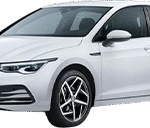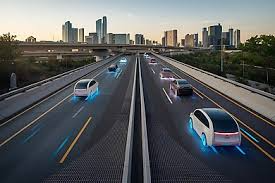Introduction
Defining Connected Vehicles
Connected vehicles are automobiles empowered with internet connectivity and smart interfaces, enabling bi-directional communication between the vehicle, infrastructure, other vehicles, and external devices. These intelligent systems transform cars into mobile data hubs—aggregating, analyzing, and transmitting critical information in real time.
Evolution of Vehicle Connectivity Technologies
The journey began with basic GPS navigation and has now evolved into intricate networks involving V2X (Vehicle-to-Everything) communications, edge computing, and real-time telematics. Milestones such as the integration of LTE, rise of embedded modems, and ongoing deployment of 5G have propelled the sector into an era of hyper-connectivity and autonomous capabilities.
For more info please visit: https://market.us/report/connected-vehicles-market/
Market Dynamics and Growth Drivers
Integration of IoT and 5G Networks
The fusion of the Internet of Things (IoT) with ultra-low-latency 5G connectivity is redefining vehicular communication. Vehicles can now exchange terabytes of data seamlessly, enabling rapid response systems, adaptive cruise controls, and dynamic navigation. The synergy of IoT and 5G acts as the cornerstone for real-time analytics, enhancing safety, efficiency, and driver experience.
Surge in Demand for In-Vehicle Infotainment
Consumers now expect immersive, digitally enriched driving experiences. High-definition touchscreens, voice-controlled assistants, AR-enhanced dashboards, and cloud-based music or video streaming have shifted the value proposition of vehicles from pure transport to experiential mobility. This shift fuels OEMs and tech companies to collaborate and innovate persistently.
Regulatory Push for Vehicle Safety and Emission Norms
Governments worldwide are implementing stringent safety regulations and emission control mandates. Technologies like Advanced Driver-Assistance Systems (ADAS), automatic emergency braking, and collision detection—powered by connected ecosystems—are being mandated in many jurisdictions, catalyzing their adoption across markets.
Key Segmentation and Market Breakdown
By Communication Type (V2V, V2I, V2C, V2X)
-
Vehicle-to-Vehicle (V2V) facilitates communication between cars, mitigating collisions and enabling coordinated traffic flow.
-
Vehicle-to-Infrastructure (V2I) links vehicles with traffic lights, road signs, and city infrastructure to optimize routes.
-
Vehicle-to-Cloud (V2C) enables cloud-based diagnostics and software updates.
-
Vehicle-to-Everything (V2X) consolidates all the above, emerging as the comprehensive connective framework of future mobility.
By Component (Hardware, Software, Services)
-
Hardware includes sensors, ECUs, antennas, and connectivity modules—forming the physical backbone.
-
Software encompasses operating systems, middleware, and analytics platforms that interpret and act on real-time data.
-
Services include telematics, fleet management, and predictive maintenance—all increasingly offered via subscription models.
By Vehicle Type (Passenger, Commercial, Electric)
Passenger vehicles dominate the connected vehicle market due to heightened consumer expectations and personalization trends. Commercial fleets are leveraging connectivity for route optimization, asset tracking, and compliance. Electric Vehicles (EVs), with their digital-first architecture, naturally dovetail with connected features, accelerating convergence.
Regional Insights and Competitive Landscape
North America’s Technological Prowess
The U.S. and Canada are pioneers in connected mobility, thanks to robust 5G infrastructure, leading automotive manufacturers, and high consumer technology adoption. Silicon Valley’s influence and favorable regulatory frameworks have made North America a breeding ground for innovation.
Europe’s Sustainability Agenda
Europe’s strong environmental policies and smart city initiatives push the connected vehicle narrative. Countries like Germany, France, and the Netherlands are championing Vehicle-to-Grid (V2G) systems and cooperative ITS (Intelligent Transport Systems), aligning transportation with climate goals.
Asia-Pacific’s Manufacturing and Urbanization Boom
China, Japan, and South Korea dominate due to massive automotive production, rising urbanization, and government-backed digitization campaigns. China’s New Energy Vehicle (NEV) strategy and Japan’s Smart Mobility initiatives exemplify the region’s commitment to connected vehicle infrastructure.
Major Players and Strategic Alliances
Key players include Bosch, Continental, Qualcomm, Harman, and NVIDIA. Collaborations between OEMs and tech giants—such as BMW-Intel-Mobileye and Ford-Google—highlight a trend of ecosystem partnerships. Startups focusing on AI, telematics, and cybersecurity are also attracting investor attention.
For more info please visit: https://market.us/report/connected-vehicles-market/
Challenges, Opportunities, and the Road Ahead
Cybersecurity and Data Privacy Concerns
The increased digitization of vehicles amplifies the attack surface for cyber threats. Unauthorized access, data manipulation, and surveillance vulnerabilities have raised alarms. Manufacturers are investing in end-to-end encryption, multi-layered firewalls, and intrusion detection systems to fortify defenses.
Infrastructure Limitations and Standardization
For V2X systems to function optimally, widespread deployment of smart infrastructure is necessary. However, inconsistent urban planning, lack of global communication standards, and high deployment costs present roadblocks. Harmonizing protocols and scaling roadside units (RSUs) remain critical imperatives.
Future Trends: Autonomous Mobility, AI, and Predictive Analytics
The confluence of AI and machine learning with vehicular data is set to usher in an era of anticipatory mobility. Vehicles will not just respond—they will predict. Predictive maintenance, behavioral modeling, and autonomous navigation systems will become mainstream. The transition from connected to cognitive vehicles is on the horizon.
Conclusion
The connected vehicles market is at a pivotal juncture—bridging traditional transportation with an intelligent, sustainable, and digitally immersive future. As technologies mature and global ecosystems coalesce, connected mobility will redefine not only how people move but how societies function.
- Connected Vehicles Market Analysis By Communication
- The connected vehicles market is revolutionizing transportation by integrating advanced technologies like IoT, AI, 5G, and V2X communication. This article explores the key innovations driving growth, market dynamics, regional developments, and the challenges shaping the future of intelligent mobility and autonomous driving.
- #ConnectedVehicles #SmartMobility #AutonomousDriving #VehicleTechnology #IoTInAutomotive
Related posts:
 Finding the Right MOT Centre Near Me: Why NH Service Center Ltd Is Milton Keynes’ Trusted Choice
Finding the Right MOT Centre Near Me: Why NH Service Center Ltd Is Milton Keynes’ Trusted Choice
 Why More UK Drivers Are Switching to Japanese Used Cars with Nobuko Japan
Why More UK Drivers Are Switching to Japanese Used Cars with Nobuko Japan
 Electric Skateboards: Revolutionizing Urban Travel and Commuting
Electric Skateboards: Revolutionizing Urban Travel and Commuting
 Importance of Employee Training and Certification in Service Quality Assurance
Importance of Employee Training and Certification in Service Quality Assurance
 From Basic Service to Complex Repairs: One Trusted Garage for Your German Car in Abu Dhabi
From Basic Service to Complex Repairs: One Trusted Garage for Your German Car in Abu Dhabi
 Why the VW Beetle Engine Model Kit is a Must-Have for Automotive Hobbyists
Why the VW Beetle Engine Model Kit is a Must-Have for Automotive Hobbyists
 Unlock Your Potential with Unichrone’s Attention Management Certification
Unlock Your Potential with Unichrone’s Attention Management Certification
 Autonomous Ride-Hailing is Here: What to Know About the Robotaxi Market
Autonomous Ride-Hailing is Here: What to Know About the Robotaxi Market







